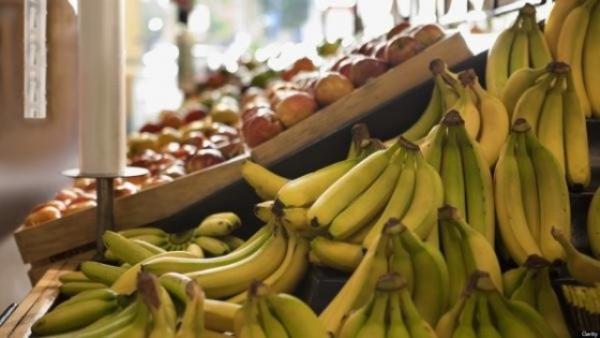November 7, 2013. A family in London fled in terror from their home after they made a horrific find: spiders in bananas they had purchased from their local supermarket. The victims of this terrifying tale of spiders in bananas are 29-year old Consi Taylor and her British family. According to a Nov. 5 report from ABC News, Taylor was enjoying a banana when she suddenly spotted a small white patch on it. At first, she assumed thespiders in the banana was simply mold, however, she was mistaken.
“I had a closer look and was horrified to see they were spiders,” Taylor said. “They were hatching out on the table, scurrying around on my carpet.”
After the spiders in bananas discovery, she, her husband and two children fled to the hotel for three days, and had their home fumigated.
Before the family fled the home, Taylor snapped a picture of the spiders in the bananas and sent it to a pest control company for information on what kind of species of spider it could be.
To her shock and horror, Taylor learned that the spiders in the banana she was eating could have been Brazilian wandering spiders: the most venomous spider in the world
However, this spiders in bananas story isn’t as bad as it sounds, according to Steven Falk, an entomologist with the invertebrate conservation trust Buglife. He told ABC News that even if the spiders in bananas had been the venomous wandering spider, the babies didnt pose a real threat to humans.
“The truth is often very mundane,” Falk said. He added, “a baby spider doesn’t have big enough jaws to bite you.”
After Sainsbury’s, the supermarket that sold the bananas, learned of the spiders in bananas horror story that the family had been through, they gave them “a substantial cash sum,” according to a statement.
“We’re very sorry and have apologized to Mr. and Mrs. Taylor,” the store said in a statement. “We do have rigorous controls on imported products at all stages – from harvesting to transportation — which is why this is so rare.”
The Brazilian wandering spider is a very deadly species of spider and they have earned a place in the record books as the spider with the most deadliest poison in the world. Brazilian wandering spiders have a very imposing appearance and exhibit aggressive behavior. Its size (which can fill the palm of the average human hand), along with its long reddish-brown teeth coupled with thick, hairy legs make this spider (which is very fast) dreaded on banana boats, plantations and tropical ports.
According to Wikipedia, the most toxic species is Phoneutria phera, which lives alone in the jungles between Peru and Brazil, but it is a species named Phoneutria nigriventer that is known for being the most notorious. The latter lives in the plantations of banana, so when collectors do their job, they are exposed to attacks by this aggressive spider.
- nigriventer is so poisonous that the amount of venom required to kill 20 mice is only 6 μg intravenously. For comparison’s sake, it takes the Southern black widow spider 110 μg of venom to accomplish the same task.
Obviously the Brazilian wandering spider is found in Brazil, but it also has been spotted in northern Argentina and Uruguay. Some of the side effects of their bite are: loss of muscle control, severe pain, difficulty breathing and if its victim is not treated with anti-venom can cause death due to lack of oxygen.
The toxin from the spider is also known for being a “natural Viagra,” causing erections up to four hours, which are caused by toxin Tx2-6 found in the venom of the spider. Thanks to this discovery, scientists hope to make drugs from this toxin to help men suffering from erectile dysfunction.
Source: Examiner.com

